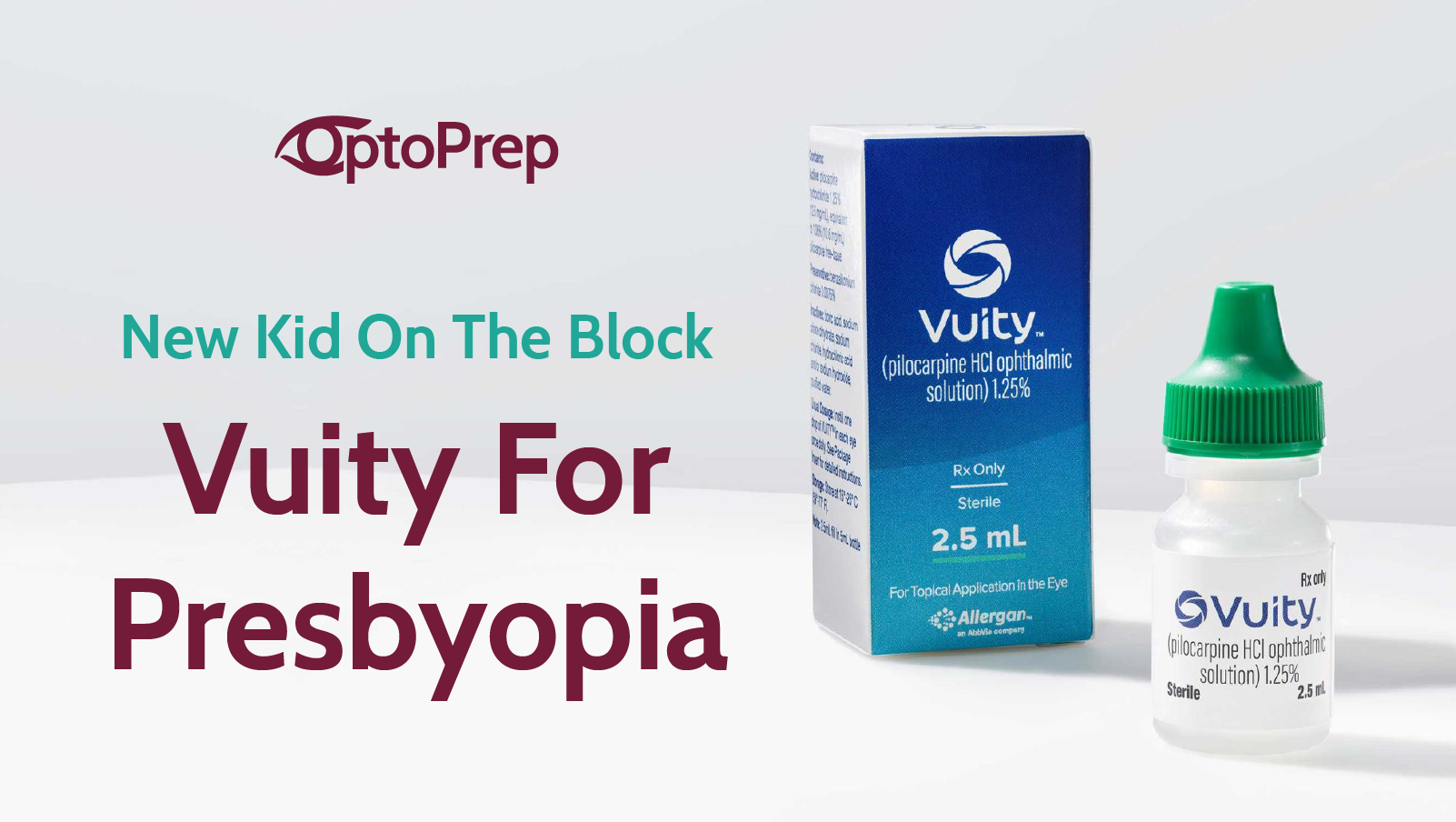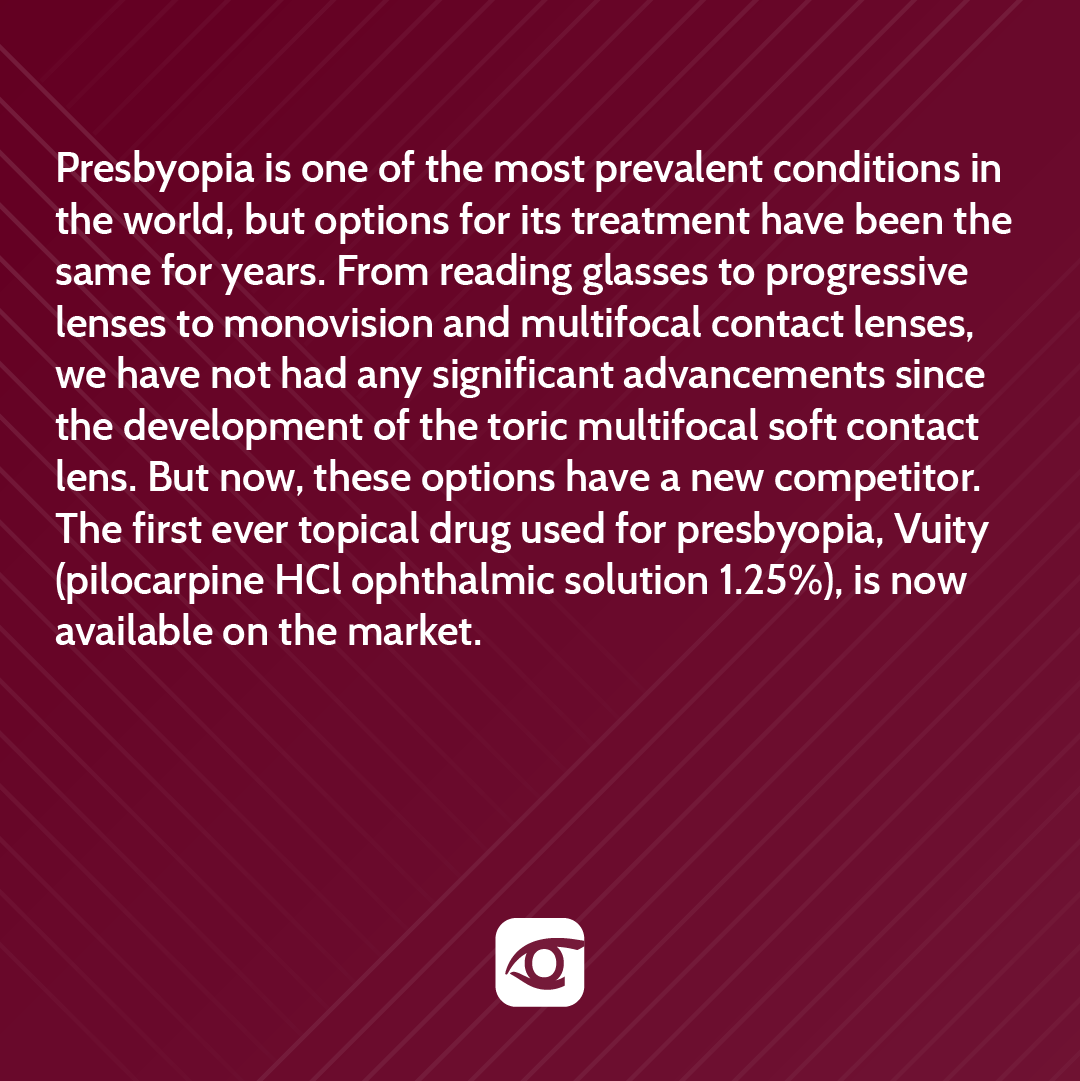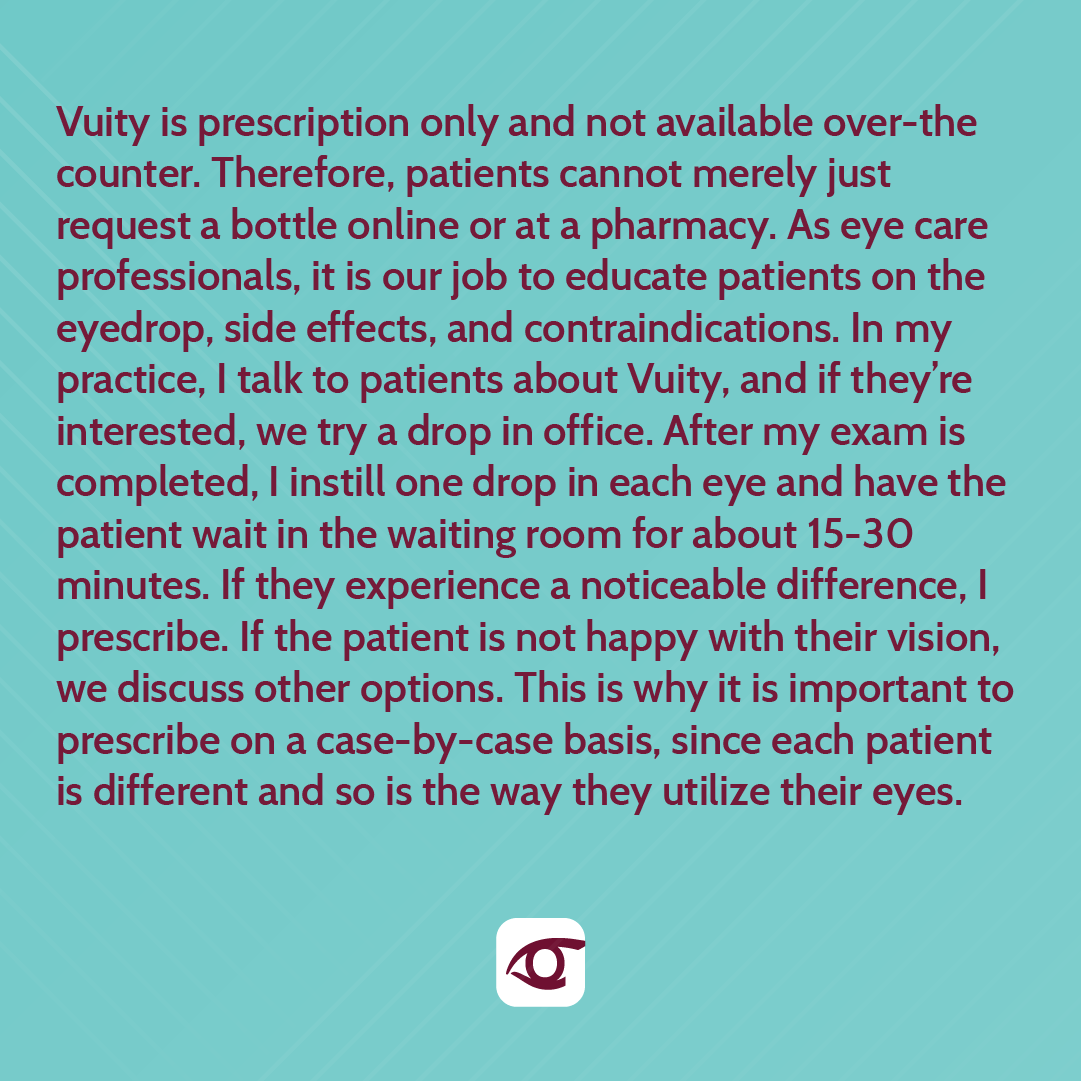
 Presbyopia is one of the most prevalent conditions in the world, but options for its treatment have been the same for years.
Presbyopia is one of the most prevalent conditions in the world, but options for its treatment have been the same for years.
From reading glasses to progressive lenses to monovision and multifocal contact lenses, we have not had any significant advancements since the development of the toric multifocal soft contact lens.
But now, these options have a new competitor.
The first-ever topical drug used for presbyopia, Vuity (pilocarpine HCl ophthalmic solution 1.25%), is now available on the market.

You may have heard of Vuity through direct-to-consumer TV commercials and magazine ads. Allergan, the company that manufactures Vuity, has really emphasized marketing directly to patients. I had patients asking about Vuity before it was FDA approved (in October 2021)!
So how does it work? Vuity is basically the same pilocarpine we are all familiar with in glaucoma management, but in this case it’s used for optimal pupillary constriction, otherwise known as pupillary miosis. The pilocarpine in Vuity dosed once daily reaches its peak efficacy shortly after instillation and can last up to six hours. In clinical trials, patients experienced three lines of improvement in their near vision under mesopic conditions without losing more than one line of distance vision.

Vuity is prescription only and not available over-the counter. Therefore, patients cannot merely just request a bottle online or at a pharmacy. As eye care professionals, it is our job to educate patients on the eyedrop, side effects, and contraindications. In my practice, I talk to patients about Vuity, and if they’re interested, we try a drop in office. After my exam is completed, I instill one drop in each eye and have the patient wait in the waiting room for about 15-30 minutes. If they experience a noticeable difference, I prescribe. If the patient is not happy with their vision, we discuss other options. This is why it is important to prescribe on a case-by-case basis, since each patient is different and so is the way they utilize their eyes.
It’s important to also note that Vuity can be used in conjunction with other options. For example, a patient may still need reading glasses for very fine print tasks, but Vuity will reduce their dependence on those reading glasses for less detailed tasks.
Though it sounds great, there are some side effects. Some patients experienced headaches and conjunctival hyperemia. Others had no symptoms at all. Patients are also cautioned to be careful in dim lighting conditions when first using vuity, as switching from distance and near may be challenging.
So now, time to address the elephant in the room. Some practitioners are hesitant to begin prescribing Vuity because they feel that it will decrease their reading and progressive lens sales. It’s important to understand that Vuity is often used in conjunction with other management options because it only lasts 6 hours. The dosing is also once daily, so patients are advised against using it more than once a day. Also, patients are required to obtain a prescription from an eye doctor, so you definitely will be able to count on the patient coming back once it’s time for a refill. If the patient has other conditions that you are monitoring, it’s important to emphasize the importance of follow-ups in order to maintain the safety and efficacy of Vuity.
Though this type of treatment is still very new, don’t be afraid to prescribe and develop your own understanding of which patients benefit the most!
~ Dr. Amadian
